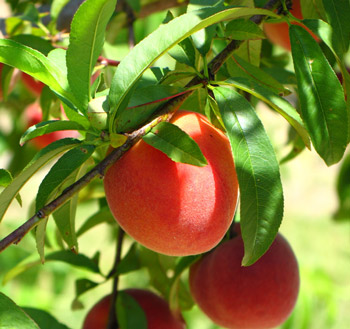Growing Fruit Trees in Your Backyard
Searcy, Ark. –
 Growing fruit trees can be a rewarding hobby, but it’s essential to plan and prepare.
Growing fruit trees can be a rewarding hobby, but it’s essential to plan and prepare.
Mid to late winter is the perfect time to plan and plant for future harvests. Nurseries typically stock fresh shipments of fruit, nut, and berry plants in January and February, ready for planting.
Do Your Homework Before Planting
Before purchasing, make sure your chosen fruit variety is suitable for your region and climate. Contact your local County Extension office for information on which varieties thrive in your area. Also, consider if you can commit to the care and attention fruit trees require to produce a healthy harvest.
Selecting Fruit Types and Varieties
Some fruits are better suited to Arkansas than others. Although grocery store fruits like certain apples, berries, or nuts may look appealing, many varieties aren’t adapted to the local climate due to temperature, humidity, and disease factors. Look for varieties with proven records of success and disease resistance.
Pollination Needs
Certain fruit trees, including apples, blueberries, pears, plums, and some muscadine grape varieties, require more than one variety for successful pollination. If you're planting these, include at least two different varieties in your orchard. Pecans also benefit from nearby trees for pollination, though wind can carry pollen if space is limited.
Extending the Harvest Season
Planting multiple varieties with different harvest dates can extend your fruiting season. For instance, choosing the right peach varieties can give you fresh fruit from late May through early August.
Rootstocks for Hardiness
For certain fruit trees, rootstocks can make a big difference. Peaches, plums, and apricots grafted onto Nemaguard rootstocks resist root knot nematodes. Apples on dwarfing rootstocks grow smaller, making them easier to manage.
Choosing the Right Site
Fruit trees need full sunlight for the best yield and fewer pests. Select well-drained soil; poor drainage reduces root oxygen and hinders growth. Test your soil’s drainage by digging a three-foot hole and filling it with water. Water should drain within 24 to 48 hours. If not, consider growing vegetables or flowers instead.
Planting and Care Tips
Give each tree ample space to grow to its full size, avoiding overcrowding that can lead to reduced yields and increased disease. Most fruit trees are grafted. When planting, keep the graft union above ground, planting no deeper than the original soil line.
Clear a three-foot diameter around the tree of grass and weeds to speed up growth and protect flowers on older trees from spring frost.
Watering Schedule
After planting, water your trees every 4 days for 2 weeks, then gradually reduce to every 10 to 20 days, depending on weather conditions. Deep, infrequent watering is best for established trees.
Pruning for Health and Productivity
New trees should be pruned back after planting to balance root loss and guide growth. Fruit trees need annual pruning to stay healthy, encourage growth, and manage size and shape. Key pruning goals include:
- Developing a strong structure from planting
- Allowing light penetration for better fruit quality
- Managing tree size
- Removing damaged wood
When to Prune
Late winter or early spring, just before growth begins, is the ideal time to prune. This timing helps wounds heal faster and reduces the chance of winter damage. Pruning in the dormant season makes it easier to see the tree’s structure, and the bark is less likely to tear.
Information for this article was provided by the Texas Cooperative Extension Service and the University of Arkansas Cooperative Extension Service.
By Sherri Sanders
County Extension Agent - Agriculture
The Cooperative Extension Service
U of A System Division of Agriculture
Media Contact: Sherri Sanders
County Extension Agent - Agriculture
U of A Division of Agriculture
Cooperative Extension Service
2400 Old Searcy Landing Road Searcy AR 72143
(501) 268-5394
ssanders@uada.edu